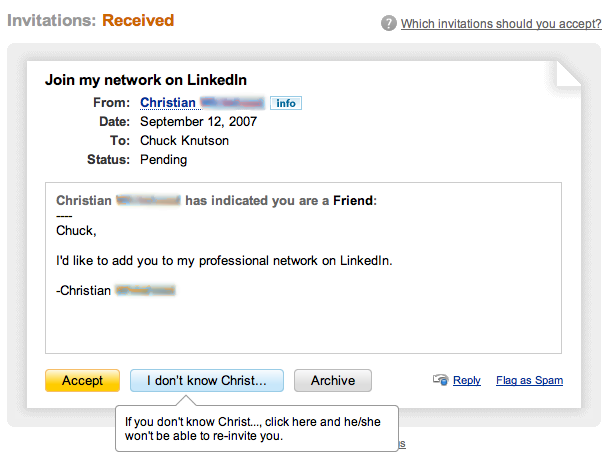Last spring I joined Facebook. I was doing research on internet safety, and wanted to get a better look at some of the popular social networking phenomena. Facebook seemed like a tame place to take the social networking plunge. Keep in mind that I didn’t do anything there. I just showed up. No picture, no real information about me. Think grandpa with a press pass at a Hannah Montana concert.
My college age kids (two daughters, one son) quickly became excited and added me as a friend. (Nice to know that $200/month in milk for the past 10 years actually meant something to them.) Apparently I was cool for being on Facebook. Sweet! I’ll take it wherever I can get it at this stage. I was added by a few other students that I knew. I invited nobody, and lurked occasionally. Still posted no picture. Don’t want to appear like I’m taking this too seriously. Just an adult passing by the sandbox. Moving along. Just an old guy. Nothing to see here. As you were, children.
So I lurked… and surfed… like once or twice a month. I learned a few things on Facebook–like the unmarried daughter now had a boyfriend. Isn’t that something? I live 12 miles away, and am a professor on the very campus where this sweet daughter of mine attends college, and I learned about her new relationship on Facebook. Nice looking guy actually. Checked him out. Great set of pictures. Cool major. Saw who his friends were. Seems like a great guy. Met him in person a few weeks later. Yep, great guy.
The following week I received an invitation from a business associate with whom I’ve done work in years past, and who is part of my professional network on LinkedIn. Nick, what are you, weird?! What are you doing on Facebook? Don’t you see my press pass? Hannah Montana for crying out loud!
I accepted his invitation. Didn’t want to be rude.
I surfed for information on a student. Checked out his friends. His dad is on Facebook. Picture and everything. Yeesh. Preferences? His dad’s favorite book? I asked this 22-year-old how he felt about his dad being on Facebook. “Cool!” Huh. I stare at my press pass, wondering if I’ve bypassed a coolness acceleration moment by remaining a non-committed Facebook lurker. I mean, someone has to provide adult supervision here.
I asked one of my daughters some time later why I never see her on MSN Messenger anymore. “Mostly I chat on Facebook now, Dad.” OK. Hmmm. I log back in. I’ve received an invitation request from… my wife?! What is THAT all about?! “The girls showed me how to get set up on Facebook and I decided to see what all the hoo-hah was about.” You go girl. I’ll stay here in the back, away from the Hannah Montana mosh pit of adolescent energy.
Next week I check out my wife’s profile, which publicly declares that she is, in fact, married to me. She has posted a profile, and it includes a picture of… US. My cover is blown. My visage is now on Facebook. Oh dear. What to do? Her list of friends now includes a healthy chunk of our extended family, most of them college age, all of whom think my wife has scored some sort of pinnacle of coolness.
They all start inviting me to be their friends as well. Riding my wife’s coolness coattails. Not the first time. I accept all incoming requests, as long as I know them.
One week later, family pictures begin to show up in photo albums on my wife’s page, visible only to individuals whom she has personally accepted into her network of friends. (Whew! I taught her that one, after my Education Week classes on Internet Safety.) Great pictures. How come I’ve never seen these before? “They’ve been on my laptop, but I figured I’d share them with the entire extended family.” Pictures of our April trip to Hawaii. The extended family is going crazy. Comments on the pictures. I can’t resist. I add a few comments of my own. My wife likes them. She thinks I’m funny. 🙂 Always a positive score in the Knutson household when the mom thinks the dad is funny.
More invitations, more pictures, the mom feels “Happy and Content,” according to her Facebook page. Yesterday her page announces that she “is looking forward to date night. It’s the best night of the week!” That’s date night with me, BTW. More upswing on the home front. On my page, Facebook implores me to “Update your status…” Like I want the world to know my status.
I ponder the press pass. I break down. I post a picture of myself. Of course the mom is in the photo. Touche’. I accept eight more invitations from people I care about a great deal.
Baby steps…






